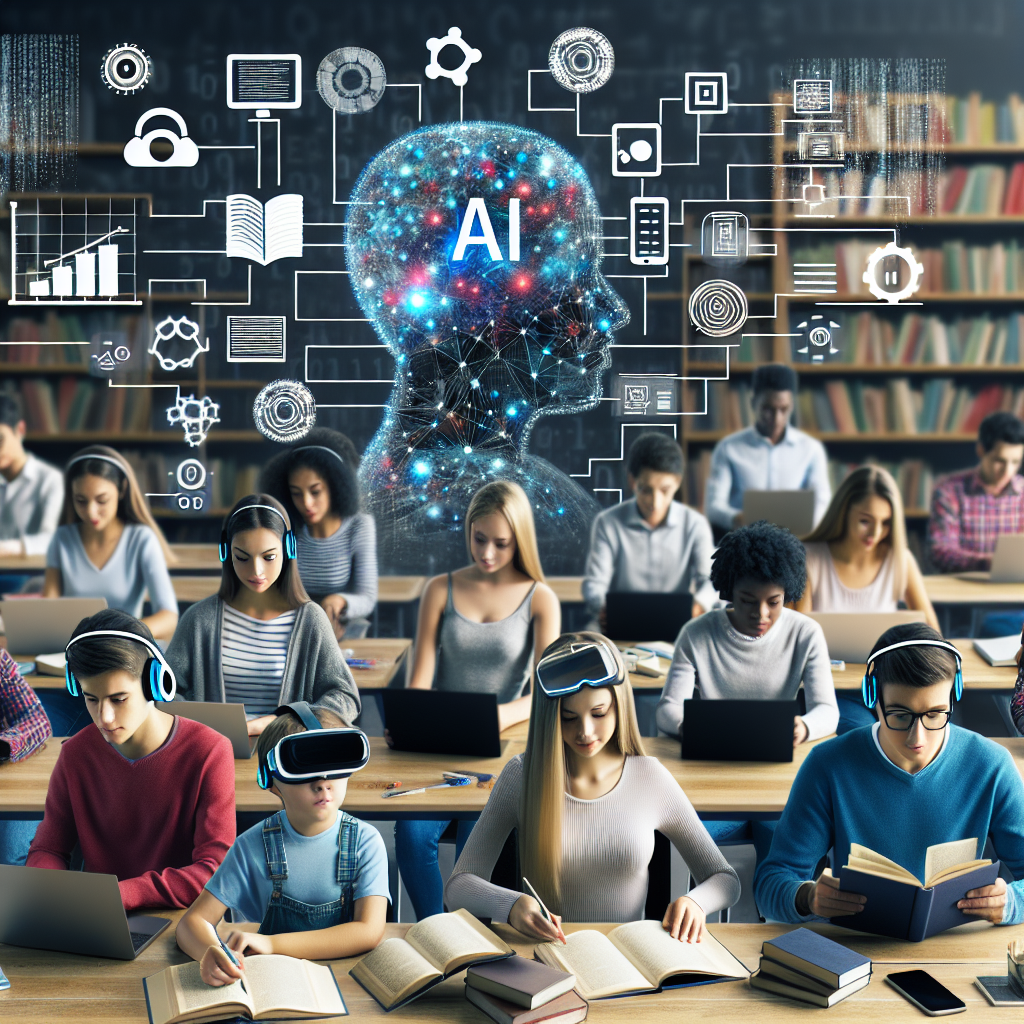In recent years, artificial intelligence (AI) has been making significant strides in the field of education. With the ability to analyze large amounts of data and provide personalized learning experiences, AI has the potential to revolutionize the way students learn and improve their academic performance. In this article, we will explore how AI solutions can be used to enhance student learning outcomes and address some common questions about this rapidly evolving technology.
One of the key benefits of using AI in education is its ability to provide personalized learning experiences for students. By analyzing data on each student’s learning style, pace, and areas of strength and weakness, AI can create customized learning paths that cater to the individual needs of each student. This personalized approach can help students stay engaged and motivated, leading to improved learning outcomes.
AI can also be used to provide real-time feedback to students, helping them track their progress and identify areas where they need to improve. This immediate feedback can help students make adjustments to their learning strategies and stay on track towards achieving their academic goals.
Another way AI can improve student learning outcomes is through the use of virtual tutors and online learning platforms. These AI-powered tools can provide students with additional support outside of the classroom, offering explanations, practice exercises, and feedback on their work. This can help students reinforce their learning and master difficult concepts more effectively.
AI can also be used to enhance the assessment process, providing teachers with more accurate and timely information about student performance. By analyzing patterns in student data, AI can identify areas where students are struggling and suggest interventions to help them improve. This can help teachers tailor their instruction to better meet the needs of their students and ultimately improve learning outcomes.
In addition to supporting individual students, AI can also be used to improve the overall teaching and learning environment. For example, AI-powered tools can help teachers create more engaging and interactive lessons, using multimedia content, simulations, and other technology to enhance the learning experience. AI can also be used to automate administrative tasks, freeing up teachers to focus on providing high-quality instruction to their students.
Despite the many benefits of using AI in education, there are some concerns and challenges that need to be addressed. One common concern is the potential for AI to replace human teachers, leading to a loss of personal connection and mentorship for students. While AI can certainly supplement and enhance the work of teachers, it is important to remember that human teachers play a critical role in supporting students’ social and emotional development, as well as their academic growth.
Another challenge is the need to ensure that AI solutions are ethical and unbiased. AI algorithms can be influenced by the data they are trained on, which can lead to biases and unfair outcomes. It is important for developers and educators to be aware of these potential biases and take steps to mitigate them, such as using diverse data sets and regularly monitoring and evaluating AI systems for fairness.
In conclusion, AI has the potential to significantly improve student learning outcomes by providing personalized learning experiences, real-time feedback, virtual tutors, and online learning platforms. By leveraging the power of AI, educators can create more engaging and effective learning environments that cater to the individual needs of each student. However, it is important to address concerns about the potential impact of AI on teaching and learning, as well as ethical considerations around bias and fairness. With careful planning and thoughtful implementation, AI can be a valuable tool for enhancing student learning outcomes and preparing students for success in the 21st century.
FAQs:
Q: How can AI be used to provide personalized learning experiences for students?
A: AI can analyze data on each student’s learning style, pace, and areas of strength and weakness to create customized learning paths that cater to the individual needs of each student.
Q: What are some examples of AI-powered tools that can help students improve their academic performance?
A: Virtual tutors, online learning platforms, and interactive lessons are examples of AI-powered tools that can support students in their learning.
Q: What are some concerns about using AI in education?
A: Concerns include the potential for AI to replace human teachers, biases in AI algorithms, and ethical considerations around privacy and data security.
Q: How can educators ensure that AI solutions are ethical and unbiased?
A: Educators can use diverse data sets, regularly monitor and evaluate AI systems for fairness, and take steps to mitigate biases in AI algorithms.

